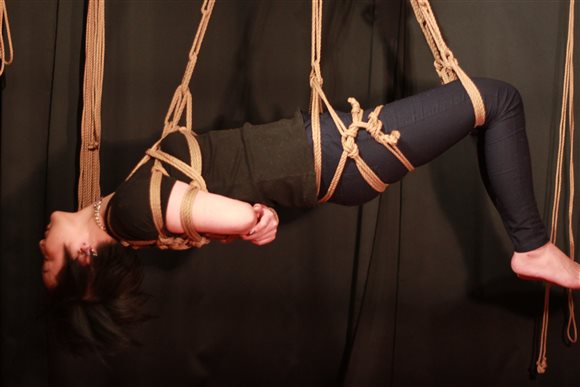Before Suspension
People either love or hate this method of suspension.
One reason for this is that the suspended one can't see the floor, so it can be very disconcerting.
It also puts pressure on the neck, so it isn't recommended for people who have weak necks (including myself).
However, there are some people who prefer the face-up style.
Take note of the above before attempting this, and don't try it if you're worried about your partner's neck.
Face-Up Suspension
First, apply suspension rope to the chest rope.
Lead rope through the top and bottom parts of the chest rope. It may be hard to understand from the photograph, but for face-up suspension, the rope should end up looking like a V.
If you do it this way, when you suspend the chest, the rope around the shoulders will be able to further support the body along with the chest rope, which can make things slightly easier on the body.
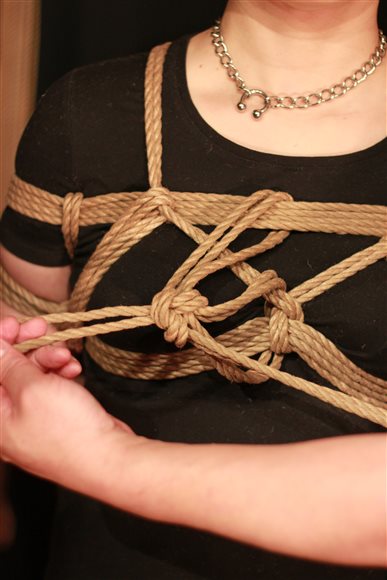
After the chest, suspend the legs. If you lean your partner back and let the body weight fall on the chest rope, it should become easier to raise the legs.
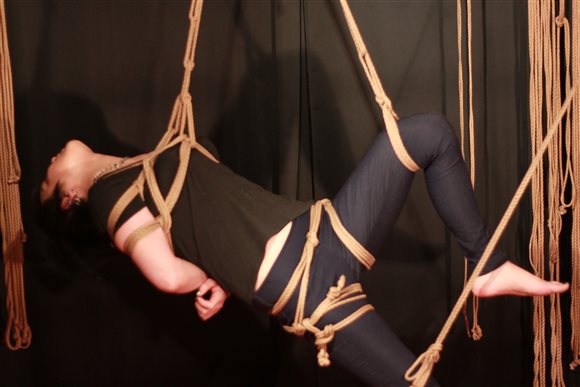
Here's a picture where the chest and both legs have been suspended. If you waste too much time here, the neck and legs will become strained with pressure.
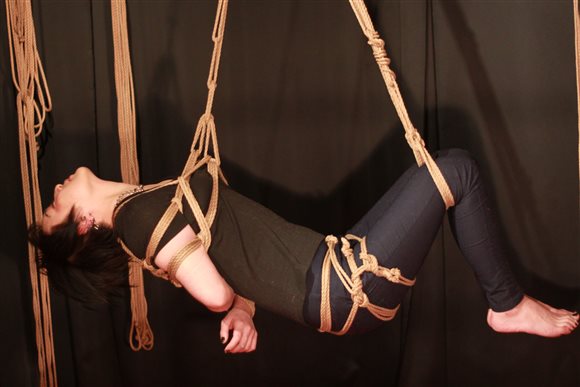
Next, quickly suspend the waist.
Keeping the chest, waist, and legs in a straight line looks good, and is easier on the suspended one.
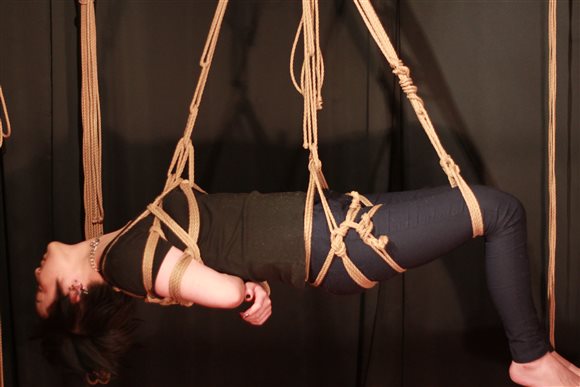
In the below photograph, the waist is too low, which means the waist rope isn't really serving a purpose.
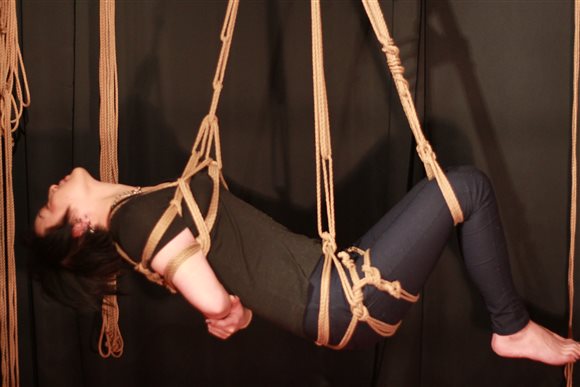
In the next photograph, the waist is too high, which concentrates all the pressure on the waist.
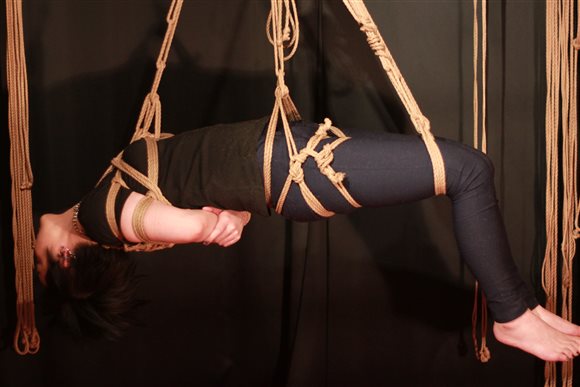
Lowering the head a little from the horizontal position can lighten the pressure on the neck.
